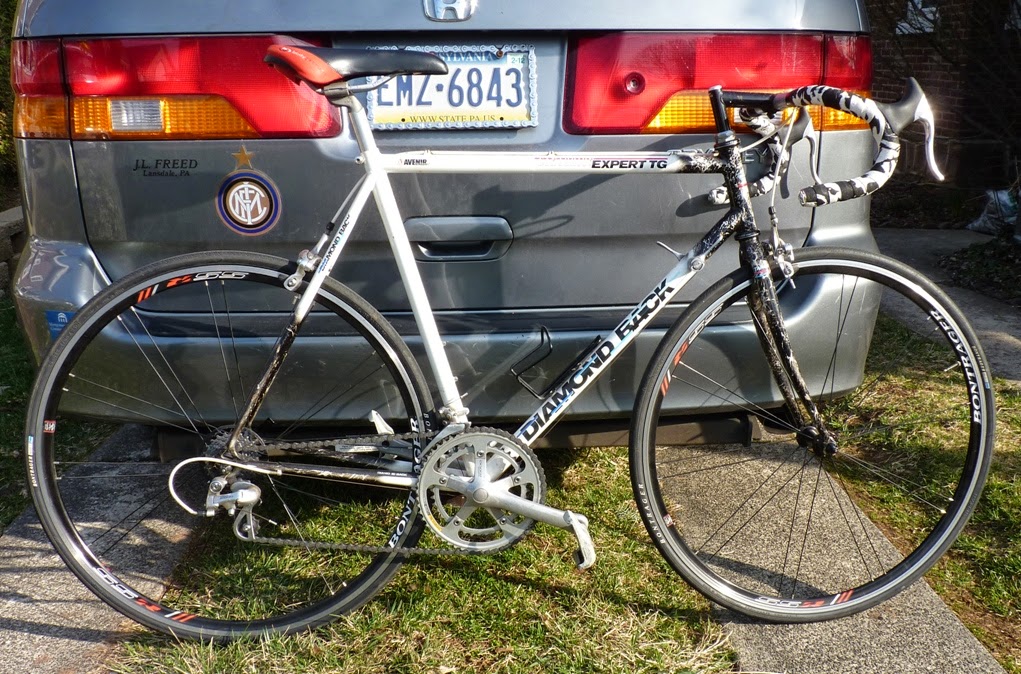I want to start off
with one of my picks for pro cycling photo of the year (so far), taken at
Sunday’s Liège-Bastogne-Liège, one of the sport’s Monuments. The shot captures it all: fantastic diagonal composition
of the famous Cote de Saint Roch climb, the cyclists struggling up the steep
ascent and fans stacked four or five deep (and hanging out windows!) to catch a
glimpse of their heroes.
I was excited to
see my current favorite, Alejandro Valverde, sort out some of his recent
strategy problems and complete a fantastic week of racing in the Ardennes
Classics. He finished a close second to current World Champion Michal
Kwiatkowski at the Amstel Gold race a week ago, before winning both mid-week at
La Fleche Wallonne and then in Liège. It is the third career victory for the Spaniard at La Doyenne ("the oldest").
The second-biggest
story of the week had to be the incredible performance of 22-year-old Julian
Alaphilippe (the frustrated rider to Valverde’s left). The Frenchman finished
an impressive 7th place at Amstel, but who could have predicted the
runner-up places at each of the other
two events this week? His countrymen have been starving for a champion, but as
a current member of an Etixx-Quick Step team LOADED with relatively young talent,
he may have to look elsewhere in order to take a leadership position – or maybe
he has shown enough this week to make his team directors shuffle their plans a
bit!
Most of the work on
the Colnago Sprint involved cleaning the bike, which required a lot of shop
rags and a bottle of degreaser (I use Simple Green). The chainrings, freewheel
cogs and chain would eventually need added attention. I first removed the
wheels in order to give the dingy sidewalls of the Veloflex tires a good scrubbing
– these classic, high-quality tires now look
the part!
I was surprised to
find, after removing a good coating of greasy mess, that the seven-speed freewheel
was Dura-Ace. Normally, since I hate mixing Italian and Japanese components, I would have immediately looked to find a Regina or Everest counterpart. However, Dura-Ace is
top-quality stuff, and since it functioned perfectly with downtube friction shifters (contrary to the various incompatibility issues that occur with more modern parts made by the two rival companies), I decided this wasn’t something with which I needed to bother.
The finishing
touches for the bike arrived rather quickly in the mail, and I anticipated easily
having the bicycle ready to list by the end of the week. Unfortunately I had
overlooked the fact that a cheap replacement set of brake pads was installed on
the rear calipers. I found a replacement set and quickly placed an order, then
went to work on the rest of the bicycle.
I had replaced the (incorrect)
acorn nuts that came on the Dura-Ace brake calipers I used previously on the
Bottecchia project and turned to the same source for the part needed on the front
Campagnolo brake for the Colnago. I ordered a small handful of these “dressier”
cone nuts this time around, in case I would require some in the future.
I was pleased that
the white brake hoods cleaned up nicely and that they wouldn’t appear shabby
next to the new bar tape when it was applied. I was unfortunately a bit
disappointed the chrome pitting on the backs of the fork blades was too close
to the paint for me to make an aggressive effort to polish it up. I didn’t want
to risk messing up the sharp line where the chrome and paint meet! However, I
was able to mix in some blue to correctly match the hue of green metallic-flake
paint I purchase to touch up the Sprint, and the more prominent scratches are
now barely noticeable!
I see the Colnago
Sprint as an excellent option for someone on the lookout for a classic Italian
racing bicycle without having to break the bank. This is an affordable model by
a world famous builder, with a bonus of better-than-usual Campagnolo
components. I only hope that I can luck out and have anywhere near the
turnaround time of the Bottecchia sale!















